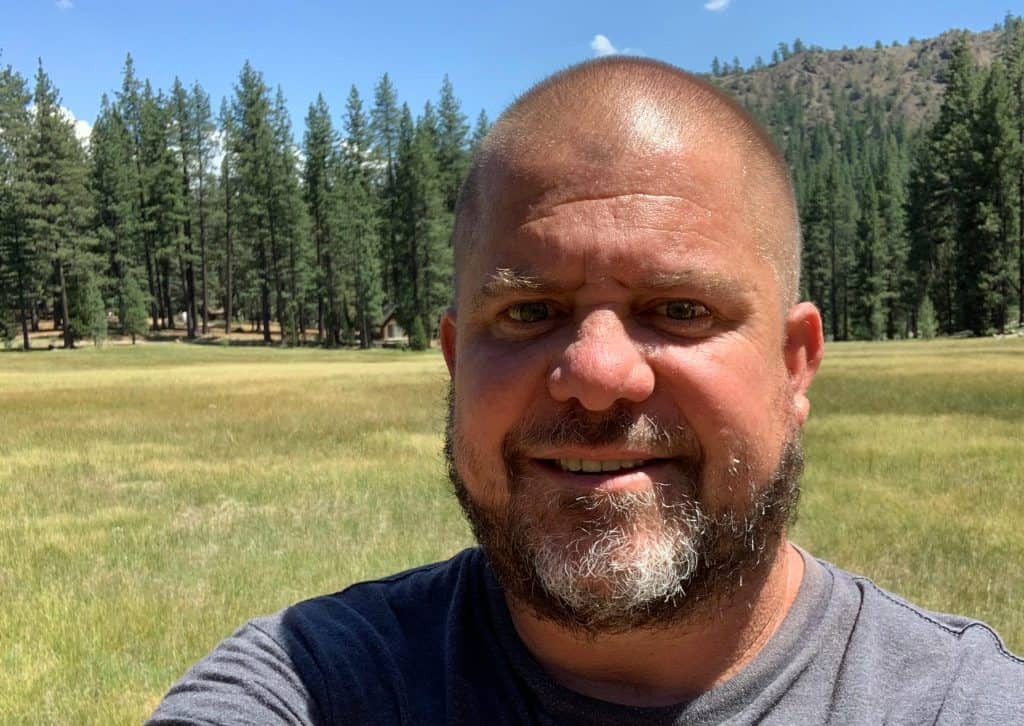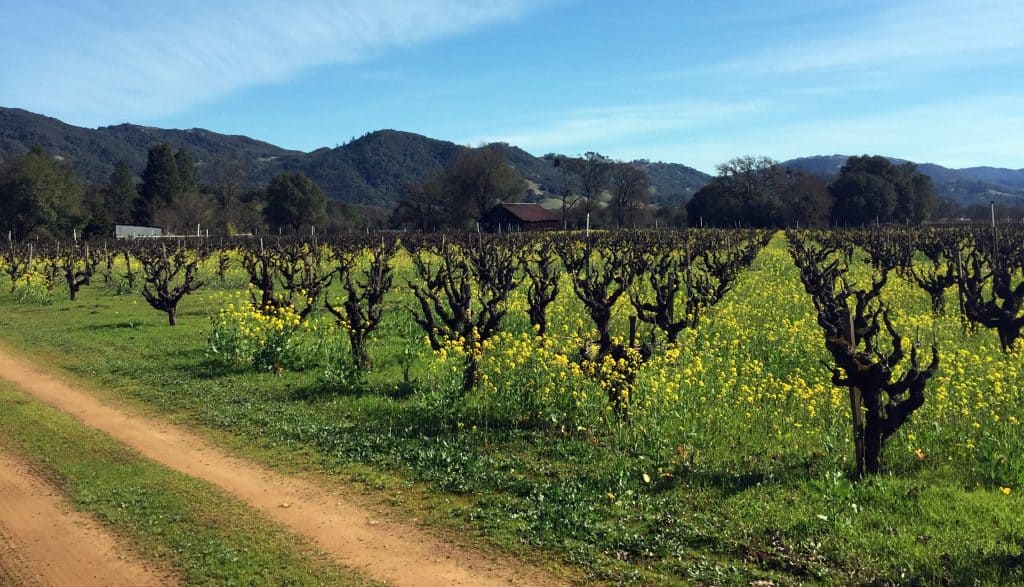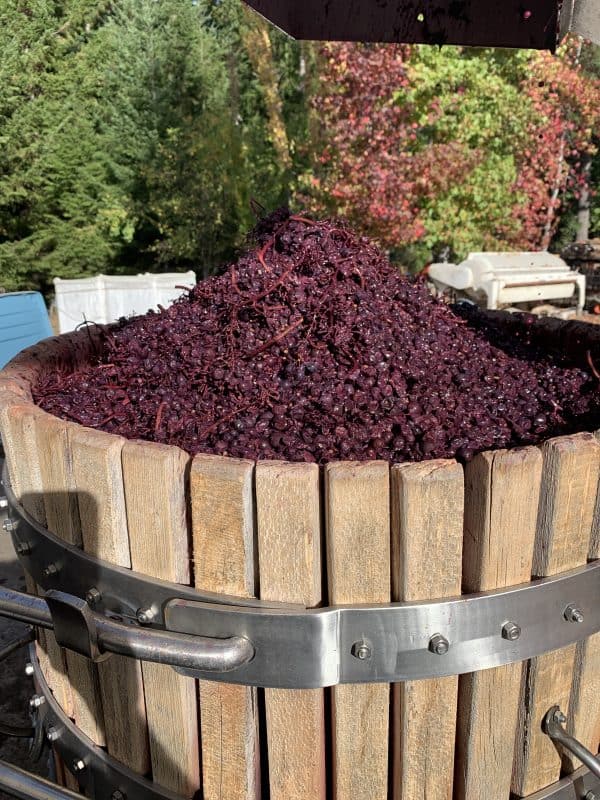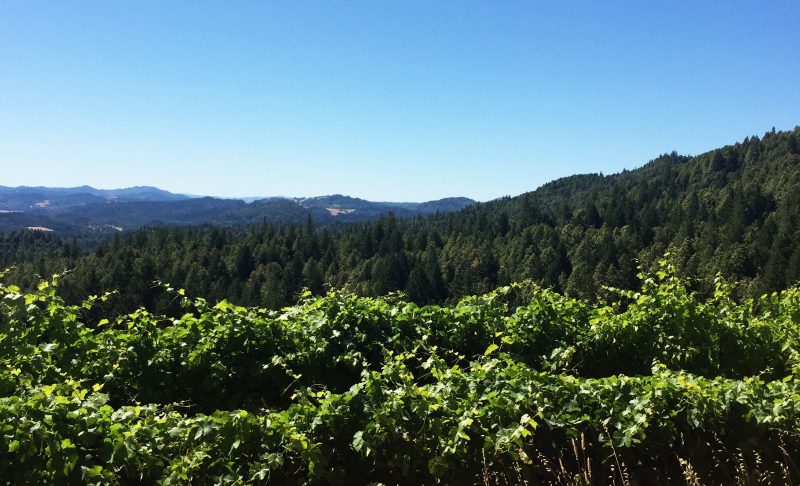Mendocino County, home to the Anderson Valley, is one of my favorite wine-growing areas in California. However, I’ve long maintained that with a few notable exceptions, those making the best wines from the region are not actually the wineries situated in the county itself.
“I’m motivated by what I see as a disconnect between the fruit that we grow in Mendocino and the wines that get made from it,” explained Ed Donovan in an e-mail that he sent following the delivery of some unsolicited samples at my doorstep. “Everything is ripened to the hilt, everything is dumped into the crusher. The wines are overripe and over-extracted.”
Donovan may not have been making wines for very long, but he’s certainly nailed his vision for snappier, lower-alcohol, crackling fresh wines from the region in which he lives and loves. It’s pretty rare to see a brand-new winemaker knocking things out of the park with his first set of wines, but when it happens, few things are more thrilling for a writer like me to experience.
This is a guy to watch. Let’s just hope he still has time to make wine if he gets elected to the Ukiah City Council next month. My wife, in particular, is going to be pissed, because she just asked me to make sure we never run out of his rosé (after finishing the sample bottle that I opened).
“Oh no,” says Donovan with a laugh, when I tell him my wife is counting on him. “I’m still going to make wine. Plenty of city council members have businesses on the side. I just want to be engaged. Instead of just arguing with people on Facebook all day, I want to actually do something locally.”
In some ways, Donovan’s run for City Council represents his second attempt to make the leap from theory to practice—to actually do something with the ideas about society, law, and justice that have been bouncing around in his head since he was an undergraduate at Stanford University.

“It’s one of the most painful aspects of my life right now,” admits Donovan, who went on to get his Masters in American Studies at UT Austin, and began his PhD thesis on the relationship between media and civil rights in Cincinnati in the Sixties during Nixon’s push for law and order.
Donovan is watching America struggle through issues and encounter powers that he researched deeply and understands intricately, but at the moment, the tools he has at his disposal for making change are a rented basket press and a community garden he’s been managing for a few years.
The PhD never happened, but that may turn out to be an excellent thing for those of us who love Mendocino wine.
“Basically I did five times too much research, and when it came down to it, I couldn’t write a thing,” says Donovan. At the time, he was holed up in a little cabin in Anderson Valley, while his wife, a history teacher, started her new job at Mendocino College. He was supposed to be writing his dissertation, but instead found himself visiting wineries and reading the Help Wanted ads in the local paper.
He responded to an ad for a tasting room associate at Navarro Vineyards, and landed the job.
“I had actually worked a harvest before grad school in Virginia,” says Donovan, who also worked at Martin’s Wine Cellar in New Orleans for more than a year after graduating from Stanford.
“There I was, making $8.50 an hour with my Stanford degree, but I was drinking Beaucastel, Burgundies, Bordeaux and I just got the bug,” says Donovan, who has a particularly fond memory of plowing through a case of 1991 Beaucastel that he split with another wine shop employee. “I think I drank through my share in the space of a week. It was glorious.”
Unsurprisingly, perhaps, Donovan slipped easily into the wine industry, working for Navarro Vineyards for a time, but realizing that he wanted to do more with wine than hospitality. In a move he calls in retrospect “a big mistake,” he and his wife even went so far as to buy a house and a lease option on 8 acres of Zinfandel in Lake County, but the commute was rough for his wife, and with a kid newly in the picture, Donovan lacked the time or money to make wine.
In 2014, Donovan and his family moved back to Mendocino County, ending up in Redwood Valley outside of Ukiah, where he got a job in sales at Campovida Winery. In 2015 he convinced the winemaker there to let him make a barrel of wine, and he was hooked. In 2016 he found some custom crush space, sourced some grapes, and made the first vintage under the name Boonville Road Wines.
“That first vintage I made, they’re solid wines, but much more conventional, more extracted. There’s a Carignan in there that’s even a hair sweet. But that’s not what I’m going for,” explains Donovan.
When I ask him what he is going for, he pauses, and then says simply, “I almost can’t have enough acid.”
And that’s when I know we’re going to get along just fine.
“I drink Beaujolais and light Italian reds. I’m going for a lighter extraction, lower alcohol, just a fresher package than I see up here,” continues Donovan. “I have friends in the business, and I watch them basically putting raisined bunches in the fermenter, and I just don’t want that. I know what I want to drink.”
Through a combination of inquisitiveness, learning the techniques used on wines he likes, and his own intuition, Donovan has landed himself squarely in the middle of the new wave of California winemaking responsible for what I think are some of the state’s most exciting wines.
He picks earlier than most of the other winemakers in his region. “I just eat the fruit relentlessly, and frankly I think it’s ready before a lot of the other people I’m talking to,” says Donovan, who admits he’s horrible at guessing sugar levels. “I guess that the fruit is at 22 brix, but it’s only at 19, but I don’t care because it tastes great and I’m going to pick it. I’m convinced the key to making great wine is picking earlier than you might think.”
Increasingly, I’m of the same opinion. I think a lot of winemakers in California need to recalibrate their palates when it comes to munching grapes off the vine. A lot of them want the fruit to taste sweet and ripe, but I think by the time it does, some potential has been lost.
Donovan foot treads most of his grapes in open-top wooden fermenters and has decided that with a couple of exceptions (Mourvedre being one) that whole-cluster fermentation is the right way to go. He uses ambient yeasts, punches down a couple of times per day during fermentation, and perhaps unsurprisingly aims to add no additional acid to his wines. As a tiny operation that sometimes piggybacks on others’ grape contracts, however, he doesn’t always get to call the pick date, so he isn’t above adding some acid if he gets fruit that is riper than he would like.
On the advice of his fellow Mendocino winemaker Cris Carter of Weatherborne Wines He has decided he prefers settling the wine after fermentation and pressing, and immediately racking it off its heaviest lees (fermentation sediments) before it goes into barrel, and then never again. For him, this technique makes for cleaner wines.
And as for barrels?
“All neutral oak,” says Donovan definitively. “I don’t really want any oak in my wine. When I first started drinking wine, like a lot of people, I thought Silver Oak was so sensational. I now can’t stand any oak in my wine at all. I had a third-use barrel in the lineup and I had to get rid of it. It was too much for me.”
Donovan is working to establish direct relationships with growers that have sites conducive to his winemaking goals, and trying hard to make sure he finds growers that farm organically, something he says is harder than he would like in Mendocino County.
At the moment he is sourcing Syrah from Broken Leg Vineyard in Anderson Valley (shown at top); several varieties from Cole Ranch; Mourvedre from Alder Springs Vineyard; and some spectacular old-vine Carignan from Casa Verde vineyard in Redwood Valley (shown below).

Donovan’s 2018 vintage was the first he felt truly achieved his goals from a winemaking perspective, and like so many tiny operations (he made roughly 1050 cases) he’s now struggling to sell it. In the service of sales, he was just about to sign the lease on a tasting room space in the Anderson Valley, but the pandemic hit, and quickly put a damper on those plans.
Then came the fires.
Donovan says he’s only going to make a rosé in 2020. Between smoke from the Glass Fire and the massive 1.03 million-acre August Complex fire (the single largest wildfire in California’s history), there’s not much fruit that seems safe for him to buy.
“Since I didn’t sell as much 2018 as I would like, I wasn’t going to make as much wine [in 2020] anyway,” says Donovan, who is also looking to find a production facility closer to Ukiah that can serve as a more permanent home base.
In the meantime, Donovan is once again taking a run at his passion for community organizing and social justice. I hope he is successful, but I can’t help but be thankful that his path to this point included a detour into wine. One of the singular pleasures in life involves my discovery of new wine projects that are worth people’s time and attention.
Don’t let the funky labels fool you. These are serious wines from what I believe to be a seriously talented winemaker, from whom I am looking for many more good things to come.
Tasting Notes
2018 Boonville Road “Cole Ranch Vineyard” Riesling, Mendocino County, California
Pale gold in the glass, this wine smells of lemon zest, lemon pith, and white flowers. In the mouth, wonderfully bright lemon juice and lemon pith flavors have a hint of honey scent, though no trace of sweetness to them. Clean, crisp and wonderfully zippy thanks to excellent acidity. 11.9% alcohol. Score: around 8.5. Cost: $25. click to buy.

2018 Boonville Road Rosé of Syrah, Mendocino County, California
Palest peachy pink in color, this wine smells of orange peel and crabapples. In the mouth, vibrant citrus peel, rosehip and hibiscus flavors are positively mouthwatering thanks to electric acidity. Silky textured, and utterly refreshing. A blend of 93% Syrah and 7% Grenache, foot treaded and then pressed the same day. Did not go through malolactic conversion. 12.9% alcohol. 173 cases made. Score: between 9 and 9.5. Cost: $21. click to buy.
2018 Boonville Road “SBW- Special Barbecue Wine” Red Blend, Mendocino County, California
Light to medium garnet in color, this wine smells of camphor wood and red fruits. In the mouth, herbal notes of strawberry and cherry have a woody, even cedary quality, with excellent acidity and faint, powdery tannins. A blend of 47% Grenache, 42% Mourvèdre and 11% Syrah. 13.8% alcohol. Score: between 8.5 and 9. Cost: $30. click to buy.
2018 Boonville Road “Alder Springs Vineyard” Grenache, Mendocino County, California
Light garnet in the glass, this wine smells of strawberry jam. In the mouth, wonderfully juicy strawberry and raspberry flavors have a faint herbal and floral aroma with gauzy tannins that whisper at the edges of the palate. Gorgeous citrus notes linger in the finish. An outstanding example of what can be achieved when Grenache is picked early and farmed for finesse rather than power. 13.4% alcohol. Score: between 9 and 9.5. Cost: $35. click to buy.
2018 Boonville Road “Claret – Cole Ranch” Cabernet Sauvignon, Mendocino County, California
Medium garnet in the glass, this wine smells of cherry and cigar box. In the mouth, cherry, plum, and plum skin sourness mix with a hint of darker earth and dried herbs. Remarkably light on its feet at an astonishing 11.9% alcohol, this wine is made from vines planted in 1972 and frankly it tastes like California Cabernet from another era. Lovely. Score: between 8.5 and 9. Cost: $32. click to buy.
2018 Boonville Road “Alder Springs Vineyard” Mourvedre, Mendocino County, California
Medium to dark garnet in color, this wine smells of blackberry and blueberry and leather. In the mouth, hints of black pepper mix with licorice root and blackberry, with a fantastic citrus peel kick at the end of the palate thanks to excellent acidity. Lithe and juicy and delicious. 13.8% alcohol. Score: around 9. Cost: $38. click to buy.
2018 Boonville Road “Broken Leg Vineyard” Syrah, Anderson Valley, Mendocino, California
A cloudy dark garnet in the glass, this wine makes the mouth water right from the very first sniff of white pepper and charred steak layered over black cherry and blackberry. In the mouth, beautiful white and black pepper flavors mix with blackberry and black cherry that have an almost saline quality. Soft, leathery tannins buff the edges of the mouth. Gloriously cool-climate in aspect, and refreshing with its mere 13.9% alcohol, this wine has exquisite acidity and balance. Score: between 9 and 9.5. Cost: $35. click to buy.




